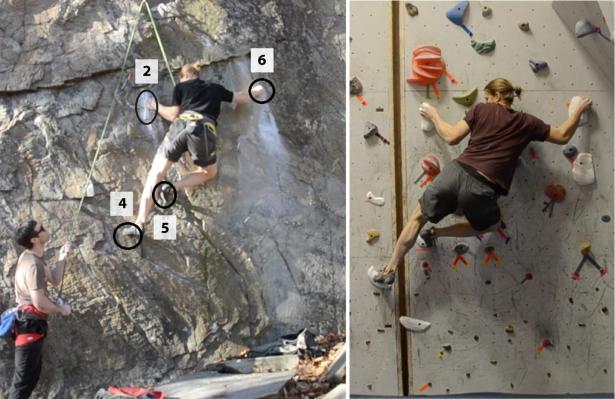Researchers at Dartmouth have created a system that uses 3D modeling, fabrication, and other techniques to recreate popular outdoor rock climbing routes. The system watches climbers as they scale these routes and then recreates the experience with handholds strategically placed to mimic the natural crevices in a rock.
From the release:
The research team reconstructed the most challenging sections or “cruxes” of two expert climbing sites outside, New Hampshire’s “Things As They Are Now (TATAN)” and Utah’s “Pilgrimage,” on a climbing wall indoors. Both sites have a difficulty rating of 5.12a. The study focused on the key rock features in each crux that the climber used for the ascent, as fabricating an entire crux would be cost prohibitive.
To replicate the climbing routes indoors, the team created 3D reconstructions of the rock walls using multi-view stereo. They also shot reference video of the climber’s ascent to capture where he supported his body and to estimate his skeletal poses, including the contact regions for his hands and feet on the rock wall. This information was critical to isolating the rock wall’s geometry, which informed the shapes of the holds and where they would need to be fastened later on the indoor wall.
Once the routes, rock features and climbing holds were 3D modeled, the team used rapid prototyping, and molding and casting techniques, to create climbing holds similar to those found at indoor climbing gyms. The holds are first fabricated out of foam using a CNC router, which naturally has a gritty texture; then the final hold is cast with high strength resin.
The system then compared users’ movements on the indoor models with the outdoor models. In short the experience was the same or similar to the natural climbs.
“We’re bridging between large-scale and small-scale fabrication. By fabricating only key pieces of the rock face, we’re able to recreate outdoor environments without the need for oversized gantries or other non-standard manufacturing equipment,” said Emily Whiting, lead researcher and rock climbing enthusiast. Her team will exhibit the product at the 35th Annual ACM CHI Conference on Human Factors in Computing Systems in Denver, just the place for a little simulated – and real – rock climbing.
